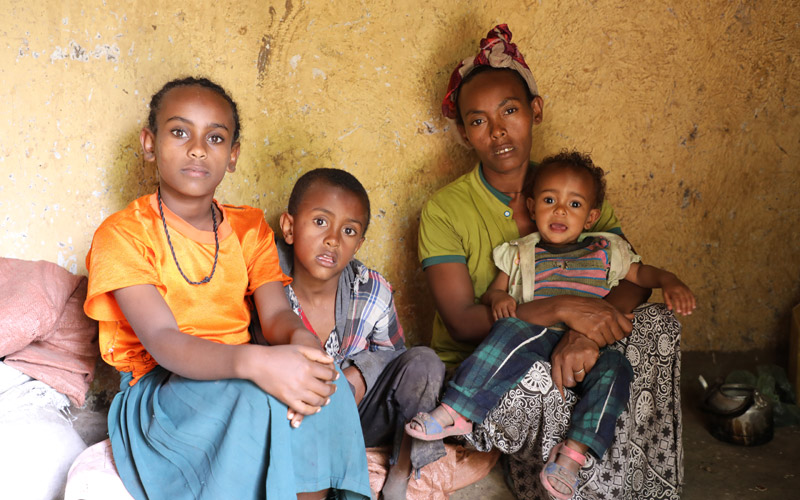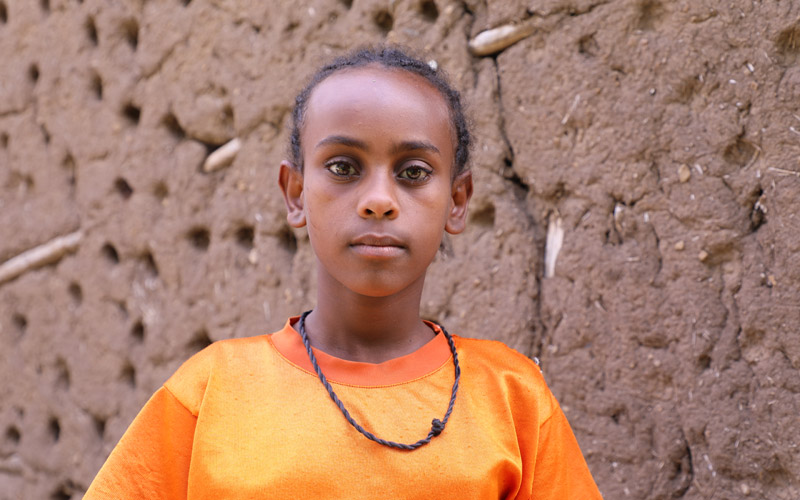March 11, 2021 marks the one-year anniversary of the day the World Health Organization (WHO)
declared the coronavirus outbreak a pandemic. And as of March 11, 2021, more than
117 million people have been diagnosed with COVID-19, and more than 2.6 million people have died, globally.
Those statistics alone are enough to give us pause. But the
secondary impacts of COVID-19 threaten to reverse 20 years of progress toward achieving the
Sustainable Development Goals (SDGs). And the results could be catastrophic, especially for children.
COVID-19 and child poverty in Canada
Canada is a wealthy country, but children living in Canada still experience poverty.
Before the pandemic, in 2018,
Statistics Canada reported that our national child poverty rate was at 8.2 per cent—a significant decrease from 13.3 per cent in 2015. The number of children living in poverty in Canada has decreased by half a million over the past few years.
But the pandemic has impeded that progress.
We hear it in the news every week. Thousands of people across the country have lost their jobs and schools have been closed for long periods of time.
A new report on child poverty in Alberta revealed that record high unemployment rates in that province led to a 19.6 per cent increase in
food insecurity for households with children. And
the Lancent reports that in wealthy countries like Canada, school closures are “likely to widen the learning gap between children from lower-income and higher-income families.”
This is a lot to cope with – all while 890,698 Canadians have been diagnosed with the virus and 22,276 people have died.
COVID-19 and child poverty in the developing world
In the developing world or low-income countries, the situation is more complex. Before the pandemic, 47 per cent of children around the world were already living with what we call
multidimensional poverty; that is, without access to health care, education, clean water and sanitation, adequate nutrition and housing.
 Birtukan, 12, (left) lives with her mother and two younger siblings 125kms east of Addis Ababa, Ethiopia. 23,000 people in her district are affected by food shortages due to COVID-19 pandemic and are in need of immediate food assistance. World Vision Ethiopia is working to make sure families like hers get what they need. Read more of her story below. Photo: Aklilu Kassaye
Birtukan, 12, (left) lives with her mother and two younger siblings 125kms east of Addis Ababa, Ethiopia. 23,000 people in her district are affected by food shortages due to COVID-19 pandemic and are in need of immediate food assistance. World Vision Ethiopia is working to make sure families like hers get what they need. Read more of her story below. Photo: Aklilu Kassaye
Since 1990, the number of children dying from preventable causes such as hunger and disease has gone down by over 50 per cent. Thanks to our collective efforts as a global community, we’ve made significant progress towards achieving a safer, healthier, more equitable world.
But because of COVID-19, those hard-won gains are at risk.
The pandemic has triggered the deepest global recession since the 1930s. Extreme poverty has risen for the first time in 22 years, and unemployment has increased dramatically. The World Bank predicts that COVID-19 will add as many as
150 million extreme poor in 2021, half of them children.
Our own research warns about ongoing, and potentially devastating impacts to children around the world because of COVID-19:
What’s World Vision doing to respond?
A year ago, we launched
the largest emergency response in our history. The plan spans more than 70 countries, engaging 400,000 faith leaders and 150,000 frontline community health volunteers, to reach 72 million people, including 36 million children.
 In partnership with local communities and partner organisations, World Vision is raising awareness around the importance of handwashing, mask wearing, and physical distancing to prevent the spread of COVID-19. (Photo: Saw Moo Kale
In partnership with local communities and partner organisations, World Vision is raising awareness around the importance of handwashing, mask wearing, and physical distancing to prevent the spread of COVID-19. (Photo: Saw Moo Kale)
Our
top priorities include:
- Preventing the spread of the virus by equipping communities with information about handwashing, physical distancing and mask-wearing, as well as the materials they need to keep themselves safe.
- Strengthening local health systems by training community health volunteers and providing medical personnel with Personal Protective Equipment (PPE).
- Supporting children affected by COVID-19 school closures through educational resources, child protection information, emergency food, access to clean water, and help for their parents to make ends meet.
In the last year, we’ve reached
more than 59 million people, including 25.4 million children. And we’re providing protection and support to a new child every second of every day.
Joshua, Ecuador

Joshua, an 11-year-old sponsored child in Ecuador, is living with the heartache of losing his father, Jimberth. Jimberth had diabetes, and his health suddenly deteriorated at the height of the pandemic.
“All of a sudden, he didn’t look good. He looked really weak, like he didn’t have strength to walk," says Joshua's mom Nancy. “Then we took him to a clinic, but they wouldn’t see him. So, we took him to a hospital and that’s when it happened… He had a heart attack.”
Nancy is doing everything she possibly can to lead the family and provide for them during uncertain times. And Joshua and his brother Carlos are pitching in to help their mother do Jimberth’s work on their small cacao farm.
The grief that comes with losing a much-loved father makes moving forward difficult.
Joshua holds many fond memories of his father. “He would always be around. Sometimes he washed the cars, sometimes he relaxed in the hammock, sometimes he watched TV or went to the soccer fields with me.”
World Vision volunteers have been visiting Joshua’s family, providing emotional support in the aftermath. The family has also received kits with food and education supplies, such as books, to help Joshua continue his schooling. And thanks to his sponsors in Canada, Joshua can use technology to connect with his teachers and classmates virtually.
Sufian, India

14-year-old Sufian has lost his father Suleiman to the coronavirus, but not in the way you might think. Suleiman was a dialysis patient who lost his factory job when the lockdown began. World Vision India supported his family with money to cover hospital costs, medication and transportation expenses, and Suleiman was able to continue to get the medical help he needed.
He was also one of many people in their densely populated neighbourhood to be diagnosed with COVID-19.
When he was cleared of COVID-19 and released from hospital, they couldn't find a health centre that would accept dialysis patients who had recovered from COVID-19. Hospitals and clinics were either afraid that Suleiman might still be infectious, or that he may be re-infected from other positive patients.
Sufian's mother frantically contacted centre after centre for days, but none would accept him. Suleiman died within a week.
“My father was very protective. I miss his love... I miss that the most. The way he loved my mother and us,” he says.
Sufian is a sponsored child, and staff at World Vision India are taking measures to help him and his family navigate the challenges ahead.
Birtukan, Ethiopia

Birtukan, 12, lives with her mother, Shewaye, and two younger siblings 125kms east of Addis Ababa, Ethiopia. Her mom, a widow, used to earn a living through making injera (Ethiopian flatbread) for local hotels and by providing a laundry service. But since the pandemic began, the work has dried up. She’s struggling to pay the rent and buy food to feed her family. It’s hard for Birtukan to see her mom struggling this way.
“The status quo we are in is very tough," says Birtukan. "We do not get enough food. Our mum gets up early in the morning and goes out in search of a job for our daily bread, leaving my little brother with me and carrying our youngest sister on her back. She returns after midday. Until she comes back with bread, we have to pass the day without breakfast.
“When my brother gets hungry, he cries. I walk from house to house to beg for food for him. It is a heart-breaking experience. I feel sad and concerned to see our mother’s struggle to feed us.”
World Vision Ethiopia has been able to provide emergency food relief for 292 households and seed support for 166 households in Birtukan’s community, including Birtukan's. But 23,000 people in her district are affected by food shortages due to the COVID-19 pandemic and need immediate food assistance.
Ahmad, Lebanon

14-year-old Ahmad has spent half his life living as a refugee in Lebanon’s Bekaa Valley. He’s one of 880,414 registered refugees in the country, most of whom fled the war in Syria. At just seven years old, he and his family escaped his hometown, Daraa, in southwestern Syria.
“I don’t remember much from my life back there, but my parents told me that life used to be much better,” says Ahmad.
Despite everything they have gone through, 2020 has been one of the hardest years for Ahmad’s family. “We escaped Syria looking for peace and safety. Now we find ourselves facing an economic crisis, inflation in prices, and a pandemic. Could life be any harder for us?” asks Ahmad’s mother, Neema.
Ahmad's dad is a day labourer, and these days he's lucky to find work once every two or three weeks.
"We depend on humanitarian aid to survive. I only wish the economic situation will get better so we can continue living a normal life,” Neema says.
World Vision, in partnership with UNICEF and funding from the governments of the United States and Canada, provided Ahmad and his family with water trucking, desludging services and awareness sessions on how to stay safe from Covid-19. The family received cloth masks, sanitizer, and soaps.
“I hope one day this virus will end so we can carry on with our normal lives like before, but until then I will make sure to keep learning and studying so I have a better future when I grow up,” says Ahmad. “I will not let these difficulties break my spirit because I know it is a phase and it will pass, hopefully.”